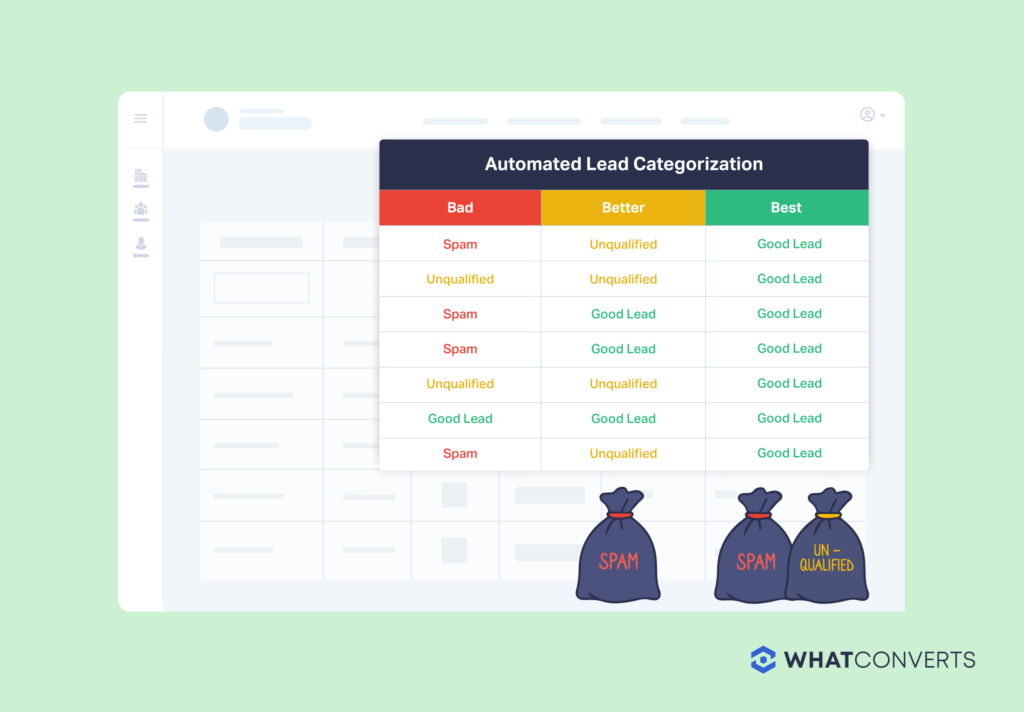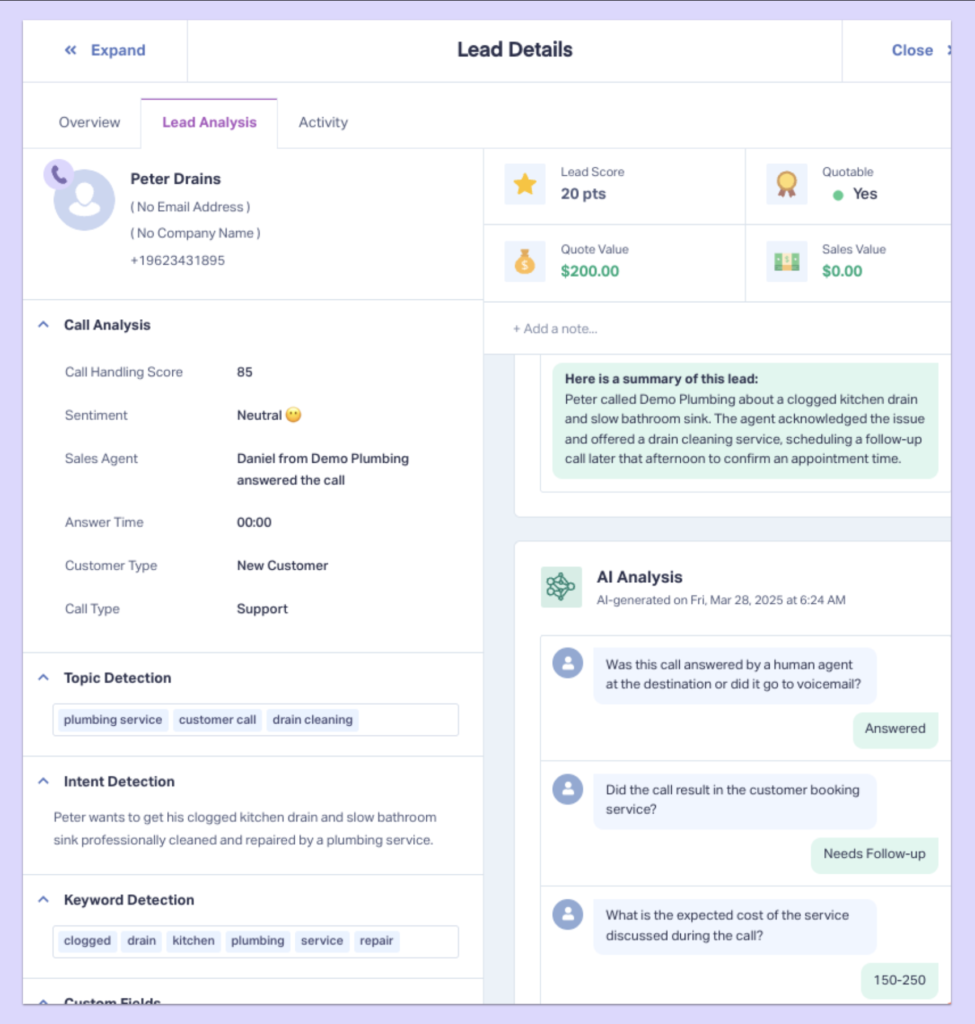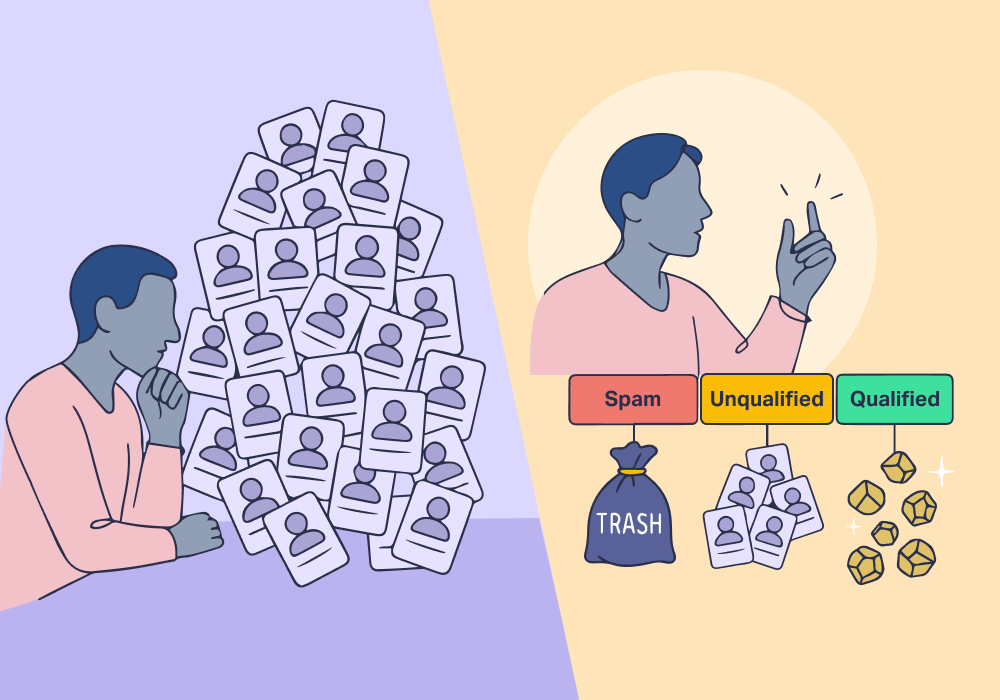
Your new call tracking setup promised clarity. Instead, it delivered chaos.
The dashboard shows 300 calls this month. On paper, that’s “proof” your marketing is working. But behind that number hides the truth:
- Spam callers fishing for information
- Existing customers with billing questions
- Wrong numbers asking for the pizza place next door
The problem is that inside your tracking platform, they all look the same. Just…calls.
Every one counts as a "conversion." Every one inflating your ROI reports and eroding your credibility.
This is the call qualification problem: until qualification becomes systematic, clarity will always be out of reach.
The Problem: A Feed of Unlabeled Conversations
Call tracking on its own does a great job of handling the basics. It captures the call. It records the source. But because most platforms treat all inbound calls identically, it doesn't tell anyone what actually happened.
For example, take these three scenarios:
- The sales inquiry
- The spam call/misdial
- The customer service escalation
Each is completely different. And each gets logged simply as a call data point.
The result is a conversion report that measures noise, not value. High call volume looks impressive until the sales team reports that most weren't legitimate prospects.
Marketing claims 200 phone leads. Sales says they closed 15 deals. Nobody can reconcile the gap.
- Which campaigns drive qualified buyers versus tire-kickers? Unknown.
- What's the actual cost-per-lead when spam is filtered out? Unclear.
- Which channels are generating real opportunities? Can't tell without manually listening to hundreds of recordings.
When qualification is manual—or nonexistent—the optimization feedback loop breaks. Agencies can't prove ROI. Marketing teams can't defend their budgets. And sales wastes time on calls that were never going to convert.
Why Manual Qualification Fails at Scale
Some teams try to solve this by listening to recordings and tagging calls manually. It doesn't scale.
An agency managing ten clients might handle 1,500 calls monthly. If you only listen to each call for 30 seconds, that’s 12.5 hours of work—without counting time to qualify and log them, then analyze patterns and optimize campaigns.
It’s not realistic.
Manual qualification also introduces inconsistency. One person's "qualified lead" is another's "needs more nurturing." Tagging criteria drift over time. Backlogs pile up. Eventually, most calls go unevaluated, and the data problem persists.
The Lead Tracking Solution
A unified lead tracking platform solves call qualification by treating it as a systematic workflow, not an afterthought.
- Automatic call recording and transcription. Every call gets captured and transcribed in real time, creating a searchable record without manual note-taking.
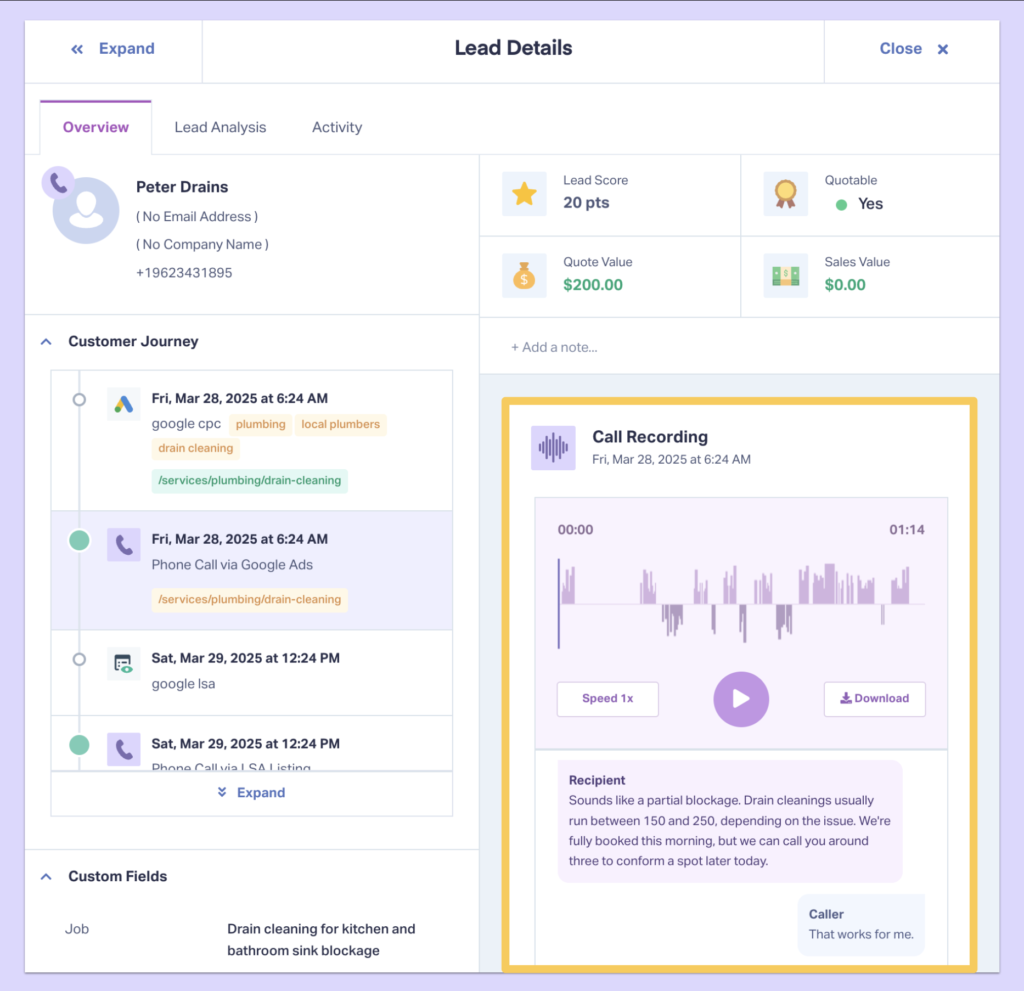
- Post-call tagging and qualification. Team members mark calls immediately after they end—spam, quote request, support issue, closed deal. The qualification happens in-workflow, not days later during a cleanup session.
- Source attribution + call type. Each call links back to its marketing source and its outcome type. This reveals which campaigns drive valuable conversations, not just any conversations.
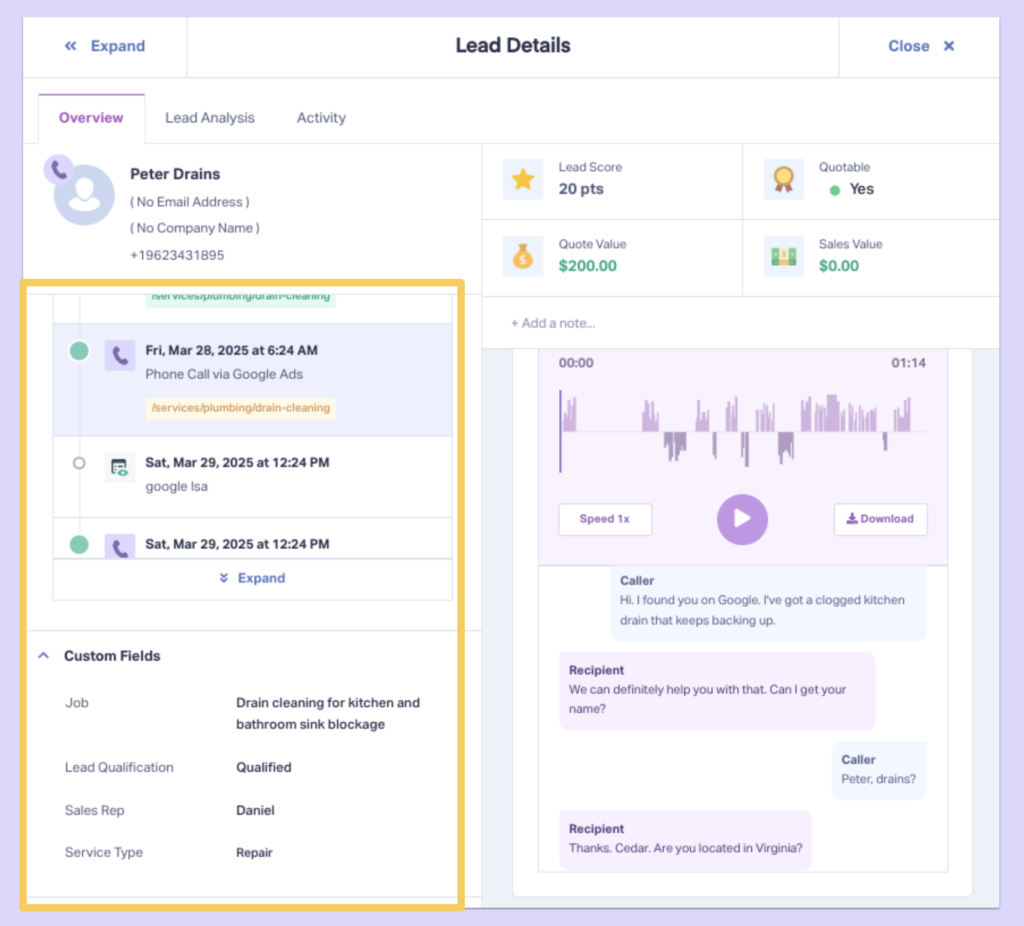
- Custom fields for lead scoring. Beyond basic categories, teams can add budget range, timeline, service interest, or any qualifier that matters for their business.
WhatConverts centralizes this process. Instead of tagging calls in one system, viewing recordings in another, and analyzing attribution in a third, everything happens in one platform:
Call comes in → Gets recorded and transcribed → Team member tags it → Data flows into reporting automatically
The AI Advantage
The intelligence layer goes further. AI-powered call analysis can surface insights without manual review—flagging buying intent signals, extracting project details, or identifying common objections.
Teams still control qualification, but the platform accelerates the process by highlighting what matters.
The Optimization Unlock in Action
5 Fold Marketing faced exactly this problem with an HVAC client generating 400-500 calls monthly from Google Local Services Ads.
Listening to every call was eating hours of agency time until they implemented automated lead scoring in WhatConverts. Calls under 30 seconds lost points. Calls mentioning "schedule" or "quote" gained points. The system automatically flagged low-scoring calls as likely spam.
Result: the agency went from reviewing hundreds of calls to reviewing only the handful most likely to qualify for refunds. In 2023 alone, they recovered $18,000 in disputed lead refunds for that single account—and the automation cut manual review time by 90%.
Read More: $18K in LSA Refunds: Automation Cuts Review Time by 90% [Case Study]
The Complete Workflow
Here's how call qualification transforms lead tracking into revenue intelligence:
- Capture every call with automatic recording and transcription tied to marketing source
- Qualify in real time using status labels that reflect actual lead quality
- Filter reporting to show only qualified leads, revealing true campaign performance
- Feed clean data to ad platforms so algorithms optimize toward valuable conversions, not volume
- Prove ROI by connecting marketing spend to qualified leads generated
Call tracking without qualification is just expensive call logging. Qualification turns every conversation into usable intelligence—revealing which marketing efforts generate real pipeline, not just phone activity.
Ready to stop counting calls and start measuring value?
Start your free 14-day trial of WhatConverts today or book a demo with a product expert to see how we help prove and grow your ROI.
Get a FREE presentation of WhatConverts
One of our marketing experts will give you a full presentation of how WhatConverts can help you grow your business.
Schedule a Demo
Grow your business with WhatConverts






